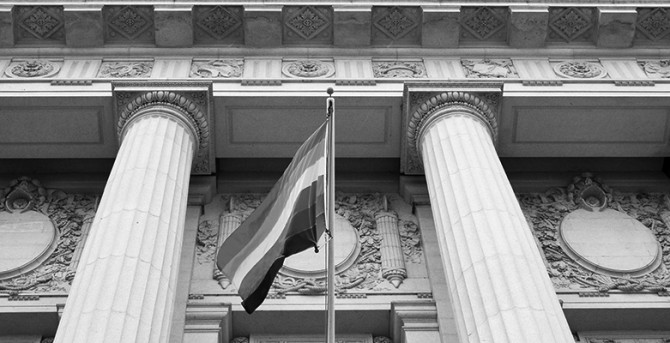LGBT
Campaigns for equal rights are a recent undertaking among the Lesbian, Gay, Bisexual, and Transgender (LGBT) community. In the 1980s, a number of states took initiatives to pass laws that prohibited employers, universities, and federal agencies from discriminating based on sexual orientation. The Clinton administration was responsible for promoting the “don’t ask, don’t tell” policy, which applied to the military. During hiring and recruitment, the military was prohibited from asking about sexual orientation; however, homosexuals also had to keep their sexual orientation a secret and abstain from any sexual behavior with another individual of the same-sex. Unfortunately, that meant that many LGBT people felt that they had to hide their sexuality.
Current Legal Issues
Quite surprisingly, sodomy was considered a crime until 2003, when the Supreme Court abolished state laws that determined it a criminal offense. The biggest civil rights issue that gays and lesbians currently face is the right to marry. The Defense of Marriage Act (DOMA), which was passed in 1996, outlined that states need not acknowledge same-sex marriages that took place in other jurisdictions. However, this was in direct conflict with one of the clauses of the Constitution, which gives “full faith and credit” to unions from other jurisdictions. Vermont was the first state to recognize unions between gay and lesbian couples, giving them all the same benefits and rights as their heterosexual counterparts. Other states have followed suit. In June of 2013, the Supreme Court struck down DOMA in a highly publicized case.

Affected Groups
Information from national and state population surveys indicates that more than 8 million adults in the United States identify as gay, lesbian, or bisexual. That amounts to approximately 3.5% of the total adult population in the country. Additionally, 9 million people are assumed to identify as LGBT. However, some sources indicate that these figures may be even higher. For many people, identifying as LGBT still comes with a significant amount of fear or the threat of harassment. In the survey, bisexuals formed the majority, accounting for 1.8% of adults in the country as opposed to the 1.7% who identified as gay or lesbian. However, women were far more likely than men to identify as bisexual. In addition, the percentage of Americans who reported having some same-sex attraction or behavior during their lifetime was far higher than the total number of people who identified their sexual orientation as within the LGBT spectrum, with 25.6% reporting same-sex attraction and 8.2% reporting same-sex behavior. The transgender population in the United States is estimated at 700,000.
Challenges
Current and future challenges for the LGBT community exist in many domains, including parenting and adoption, marriage, employment, youth and schools, and basic rights and liberties. Many gay and lesbian couples continue to fight to have the right to adopt children or have children via a surrogate. In schools, bullying is a constant concern for LGBT individuals, whether or not they have come out or are aware of their orientation. Publicized teen suicides have caused thousands to speak out against bullying directed towards LGBT youth in schools. Some individuals, such as transgender persons, continue to face discrimination and harassment on a daily basis.
